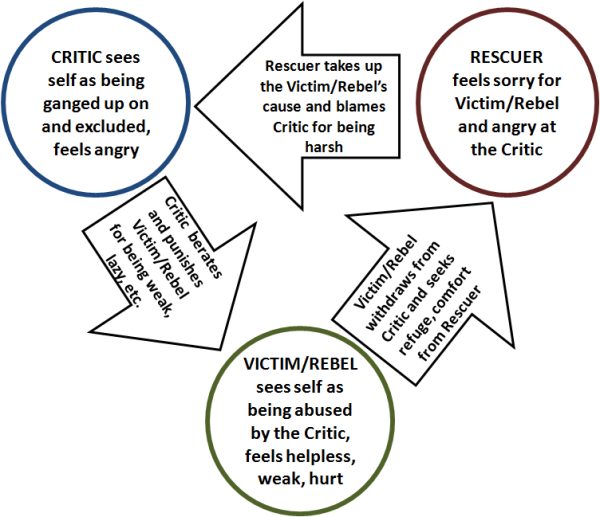Emotional burnout and compassion fatigue are common pitfalls among those of us who assume major Caretaker roles. Exhaustion, irritability, emotional numbness, and various physical complaints are warning signals indicating the need for better self-care. However, we often do not feel we have that option, as we see our own needs overshadowed by the needs of those in our care. We may develop a sort of tunnel vision, locked into a miserable path with no way out. What we had undertaken as a labor of love has evolved into a duty out of obligation, at times breeding an attitude of resentment. While there may be no appealing solution to this dilemma, this article proposes some perspectives and strategies that may offer some relief. It is likely that many of these ideas have been suggested to us previously and found lacking. Still, it is worthwhile to revisit these suggestions, reexamining and challenging our reservations and resistances to them.
The Caretaker – Dependent Relationship
It is obvious that the Caretaker role does not function in a vacuum: we need others to adopt a Dependent role in order to practice our Caretaking activities. We may assume the primary Caretaker role, or we may be called upon to take an auxiliary or backup Caretaking position. Our Dependents may have either acute or chronic needs which they are unable to fulfill for themselves. Some, particularly those with significant limitations and disabilities, may need considerable taking care of or doing for, while for others, caring for or being with will often suffice. Even with these differences, there is enough common ground to justify covering these variations from the same basic perspective, as I am doing in this article.
The Positive Impact of Caretaking on Both Giver and Receiver
Under ordinary circumstances, the Caretaker role is not just manageable, but also fulfilling. This undertaking may be longstanding, such as raising a family, or short-term, such as comforting a friend going through a temporary crisis. This role cultivates our compassion for others, strengthening the bonds of our relationship in the process. We also feel good about ourselves for helping others, especially when they express gratitude for our support. The Caretaking is obviously helpful to the Dependents, as well, particularly when it meets needs that they cannot resolve on their own. For those recipients capable of developing their self-care skills, this Caretaking gives them the time and the social modeling to become more self-reliant: why else would childhood last over a dozen years, until children are ready and able to move out on their own? And for those incapable of developing their own independent coping skills, the Caretaking provides a valuable safety net. Such is the case with children with severe developmental disorders or elderly plagued by dementia. Regardless of the Dependents’ potential for developing self-care, the Caretaker’s sacrifice and compassion helps them feel loved and valued.
Key Factors Supporting the Relationship
We can see that the interaction between Caretakers and the Dependents they support can be mutually reinforcing and mutually beneficial – a pattern which psychologist Paul Wachtel defined as a virtuous circle. Several factors shape the degree to which this interaction forms a relationship (i.e., it being enduring and recurrent). This pattern tends to persist to the degree that the Dependents experience ongoing and/or recurrent wants and needs that they cannot or will not seek to fulfill on their own. Another factor involves the particular Caretaker’s willingness and ability to help, as well as the availability and appeal of other available support options. The quality of the interaction also plays a key role: the attitudes and expectations expressed by both sides can be just as important as the tangible benefits of the support. The Caretaker’s success in satisfying the Dependent’s wants and needs plays an obvious role. Success will conclude the interaction for a given situation, yet will increase the likelihood for a repeat of the pattern when another need or want arises. The various factors affecting Caretaker—Dependent relationships are certainly more extensive and complex than described in this brief paragraph. Still, this summary suggests some strategies for addressing those times when the relationship is not serving the mutual benefit of both parties. The rest of this article will explore these factors in more depth.
When Demands for Caretaking Are Excessive
While Caretaking usually has benefits for both giver and receiver, Caretakers can get too much of a good thing. Circumstances beyond our control may intervene, with severe and enduring demands that wear us down. Caring for a parent or a spouse with dementia, or for a severely disabled child, for example, can pose a daunting challenge. Making matters worse, our care recipients may have little potential for growth and self-reliance, such that Caretaking is essentially a maintenance role, with no end in sight. In such situations, we may come to see ourselves as victims of circumstance, with no other option than total surrender to the Caretaker role.
Helping Ourselves so that We Can Help Others
It is when we are confronted with such challenges that we are most called upon to take care of ourselves – after all, we cannot be much help to others if we become overwhelmed and depleted. We can remind ourselves of the flight attendant’s instruction that in the event of loss of cabin air pressure, we should put our own oxygen masks on first, so that we can reliably assist our Dependents. We may need to do something as simple as reminding ourselves to breathe deeply when we feel the demands to help others sucking the air out of us. We have a word for when we take and release a deep breath automatically – it’s called sighing. And when we consciously take a series of deep breaths, it’s called meditation.
The Challenge of Looking Out for Ourselves
Such advice, to take care of ourselves first, sounds rather simple and straightforward – that is, until we try putting it into practice. Then, we brace ourselves for the challenge, holding our breaths and building tension. We are likely to meet resistance to our practicing self-care, at times from others who encourage our Caretaker role, yet most often and most intensely from ourselves.


